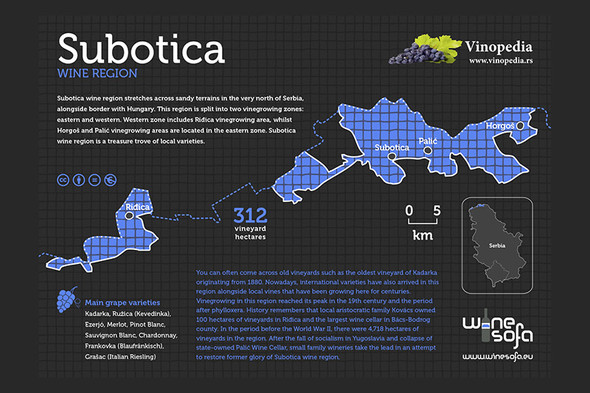Subotica wine region stretches across sandy terrains in the very north of Serbia, alongside border with Hungary. This region is split into two vinegrowing zones: eastern and western. Western zone includes Ridjica vinegrowing area, whilst Horgoš and Palić vinegrowing areas are located in the eastern zone. Vineyards of Subotica wine region cover 312 hectares. Predominant soil types are sandy soils accompanied with small pockets of other soil types, such as clay, alluvial soils or chernozem. Subotica wine region is situated at an altitude ranging between 80 and 120 meters, no slopes, so its vineyards are sprawling over the Pannonian plain. Local microclimate is moderated by several shallow steppe lakes. Subotica wine region is a treasure trove of local varieties. You can often come across old vineyards such as the oldest vineyard of Kadarka originating from 1880. Nowadays, international varieties have also arrived in this region alongside local vines that have been growing here for centuries.
Vinegrowing in this region reached its peak in the 19th century and the period after phylloxera. History remembers that local aristocratic family Kovács owned 100 hectares of vineyards in Ridjica and the largest wine cellar in Bács-Bodrog county. In the period before the World War II, there were 4,718 hectares of vineyards in the region. After the fall of socialism in Yugoslavia and collapse of state-owned Palić Wine Cellar, small family wineries take the lead in an attempt to restore former glory of Subotica wine region.
(The text was written by our friends Tomislav Ivanovic.)
Download normal or printer friendly version of poster (A3).
For anyone who would like a little more insight into Subotica, click here or here.






